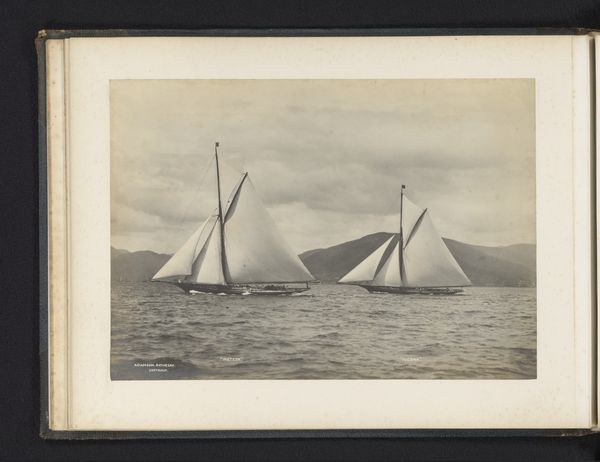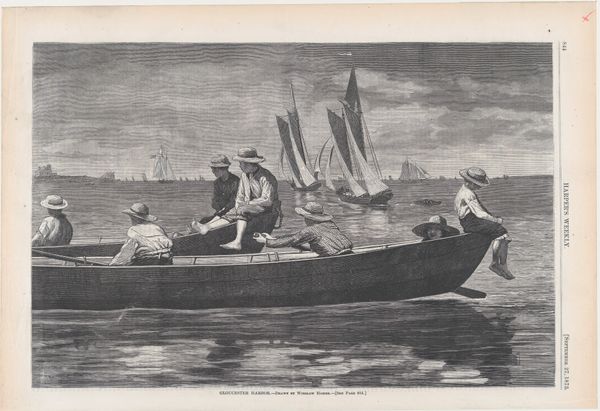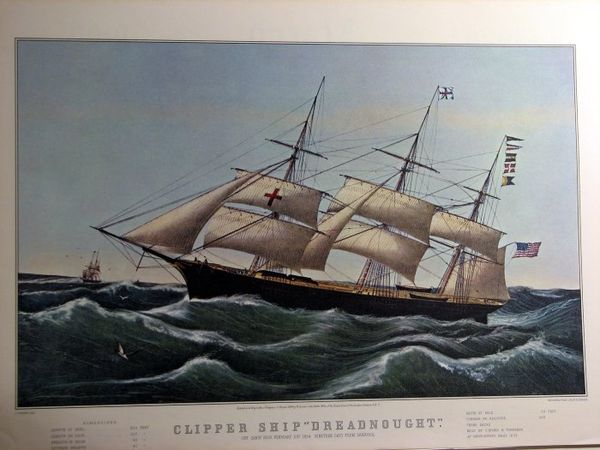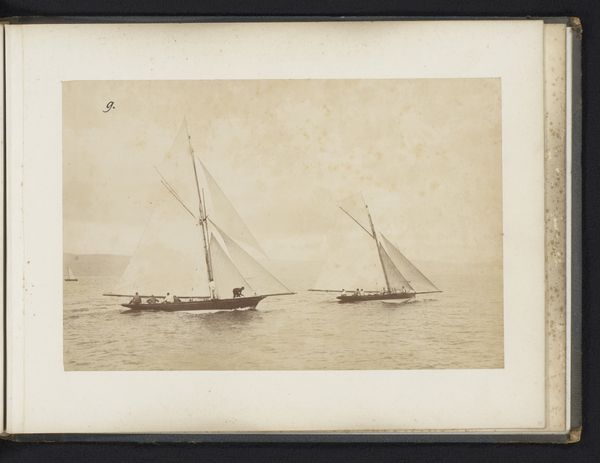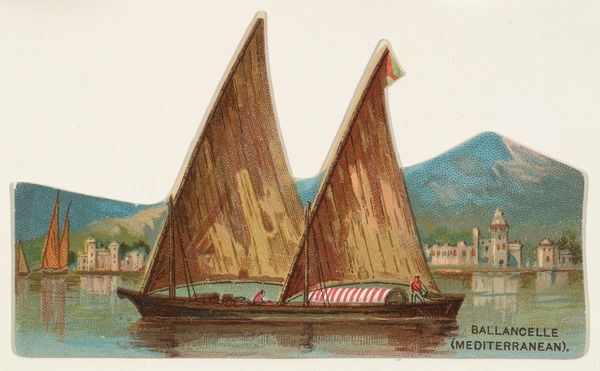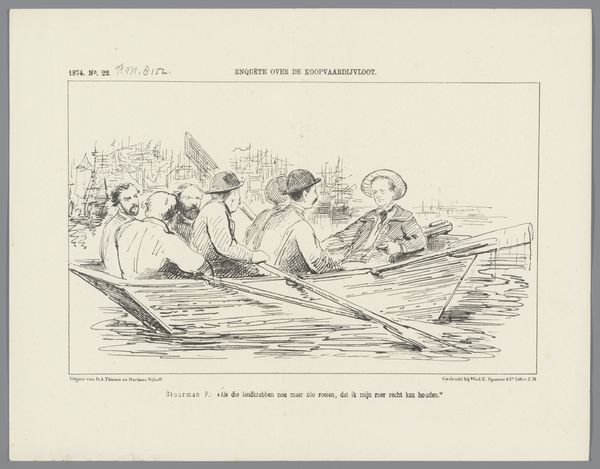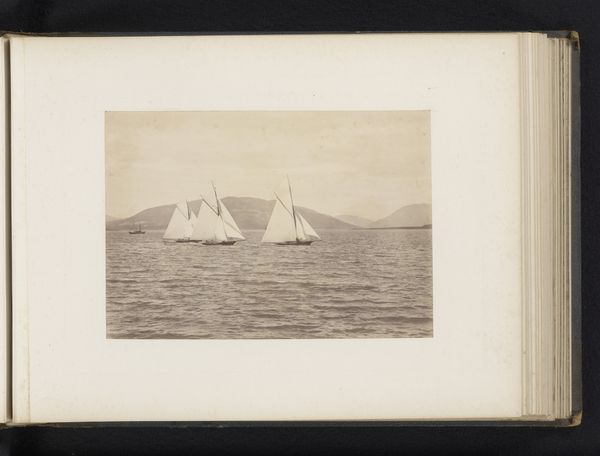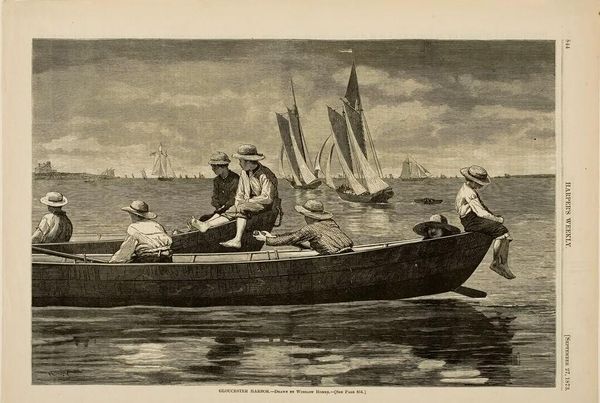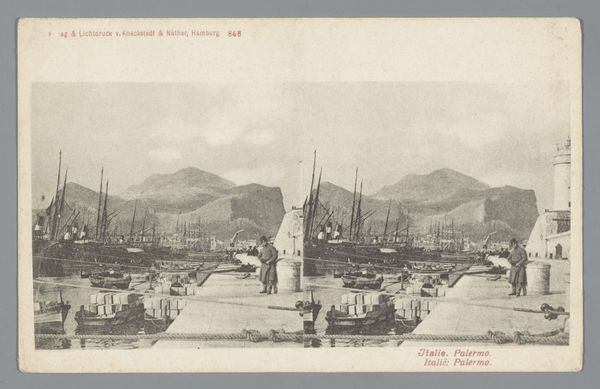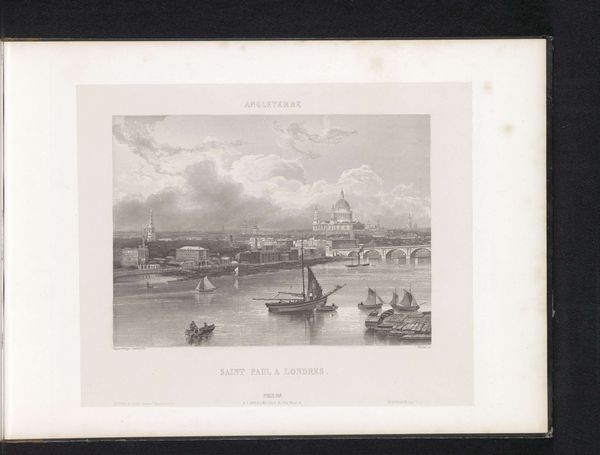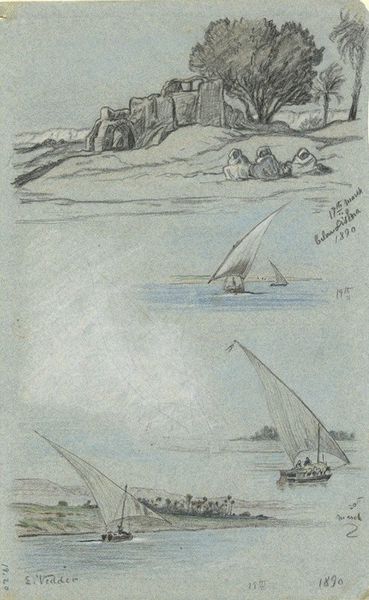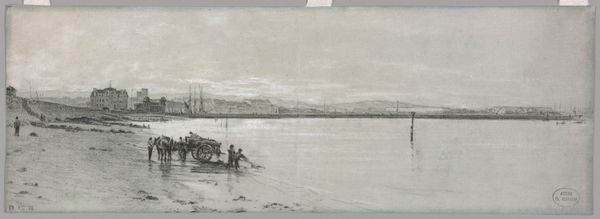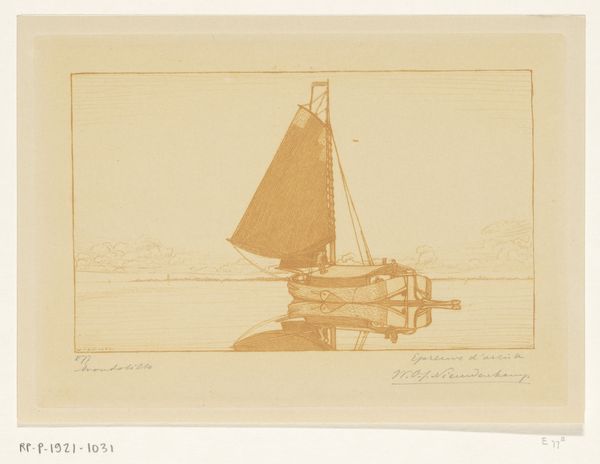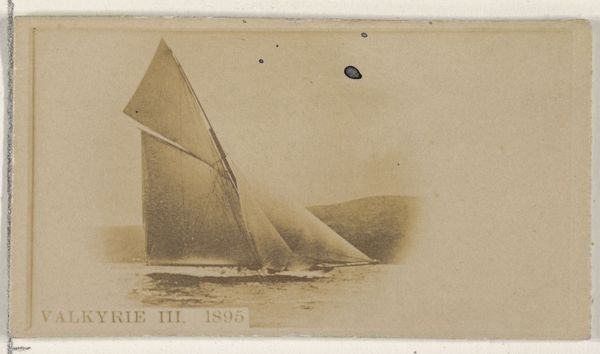
Copyright: Public domain
Curator: Let's examine this 1867 print titled "Great Five Mile Rowing Match," attributed to Currier and Ives. It depicts a pivotal moment in a rowing competition. Editor: My initial reaction is drawn to the composition’s tranquil horizontality—the calm water, the distant mountains, all framed by the two dominant, parallel racing sculls in the foreground. It conveys an odd stillness, considering the subject is supposed to be a race. Curator: Indeed, and that sense of serenity belies the intense commercial and social interests tied to such events. This rowing match for the Championship of America held substantial stakes for spectators and rowers alike. Currier and Ives were masters at tapping into popular culture, creating images for mass consumption that documented and glorified national sporting events. Editor: Looking closely, I’m captivated by how the artists manipulate the color palette, layering a cool blue tonality over the whole picture, and using gradations in shade to describe spatial recession. I wonder if it’s intended to suggest something about the psychological tension. Curator: That blue is interesting in this context, the location itself played a role. It occurred on the Hudson River at a resort area named Sing Sing (today's Ossining) north of New York City. The venue hosted the rowing competition and would have promoted leisure culture of the era. It reflected the urban appetite for witnessing rural and outdoor pursuits. Editor: Observe, too, how meticulously the artists rendered the boats. Their graceful forms, parallel and poised, are set in relation with their inverted mirror images cast on the water—doubling the reading, playing with light and shadow. It is a work about the precision, not just the sporting narrative, wouldn't you say? Curator: Perhaps, but I think we also need to consider the political atmosphere. Post-Civil War America yearned for spectacles demonstrating progress, industry, and national unity, even in the form of sporting rivalries. Rowing became a symbolic theatre for demonstrating those values. The scene seems nostalgic and a little melancholy in the afterglow of such tumult. Editor: Perhaps so, the melancholic mood could stem from its subdued and quiet tonal qualities. For me the artist wanted to suggest the feeling of water moving under a cloud, that has momentarily parted. Curator: Absolutely, its layers capture various meanings. Thank you. Editor: My pleasure, it was revealing, to find meaning in it together.
Comments
No comments
Be the first to comment and join the conversation on the ultimate creative platform.
